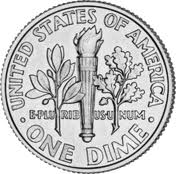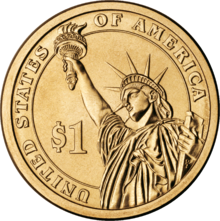


The metric system is based on powers of ten.
In science, we use the Metric System, also known as the International System of Units, because it makes unit conversions simpler. Converting between units in metric only requires moving the decimal point to the left or right since units all differ by powers of ten. Maybe it's because we've got 10 digits of our own to count on that humans settled on Base 10, but other number systems are possible and have been used. If metric seems strange to you because you're used to the American system of measurements we inherited from the English (which, by the way, even the English have mostly given up), remember that money is metric so you already have some real-world experience. Converting dollars into dimes or pennies is pretty easy math, and in metric, there are no nickels. Every unit is a 10x multiple of another. Ok, quickly, in your head, how many pennies are there in $1.60? How many dimes? Now, quickly, in your head, how many fluid ounces are in 1.64 gallons. How many pints? How many inches are in 13 feet? I think you begin to see my point. America, Liberia and Myanmar are the only countries in the world that haven't gone metric. We're not in very good company! Our archaic system hurts our ability to sell our goods internationally. It causes us to crash space probes. And it just doesn't make any sense. But ever since Jimmy Carter, the idea of converting to metric has been politically too hot to touch. Too bad because, while switching is hard, there would be substantial long term benefits to the economy and the country.



The metric system is based on powers of ten.
Base Units (there are others, but these are the most commonly used)
|
Measurement |
Unit |
Symbol |
|
length |
meter |
m |
|
mass |
gram |
g |
|
volume |
liter |
L |
|
time |
second |
s |
|
temperature |
Celsius |
C |
Table 1: Metric units arranged from left (smallest) to right (biggest).
| Prefix | nano- | micro- | milli- | centi- | deci- | deca- | hecta- | kilo- | mega- | giga- | |||||||||
| Abbreviation | n | µ | m | c | d | D | h | k | M | G | |||||||||
| Factor | 10-9 | 10-8 | 10-7 | 10-6 | 10-5 | 10-4 | 10-3 | 10-2 | 10-1 | 100 | 101 | 102 | 103 | 104 | 105 | 106 | 107 | 108 | 109 |
Table 2: The same table tipped over on its side, with metric units arranged from bottom (smallest) to top (biggest).
|
Prefix |
Abbreviation |
Factor (size) |
|
giga- |
G |
1,000,000,000 x or 109 |
|
100,000,000 x or 108 |
||
|
10,000,000 x or 107 |
||
|
mega- |
M |
1,000,000 x or 106 |
|
100,000 x or 105 |
||
|
10,000 x or 104 |
||
|
kilo- |
k |
1,000 x or 103 |
|
hecta- |
h |
100 x or 102 |
|
deca- |
D |
10 x or 101 |
|
Base unit (no prefix) |
meters, grams, Liters, seconds |
1 x or 100 |
|
deci- |
d |
0.1 x or 10-1 |
|
centi- |
c |
0.01 x or 10-2 |
|
milli- |
m |
0.001 x or 10-3 |
|
0.0001 x or 10-4 |
||
|
0.00001 x or 10-5 |
||
|
micro- |
µ |
0.000001 x or 10-6 |
|
0.0000001 x or 10-7 |
||
|
0.00000001 x or 10-8 |
||
|
nano- |
n |
0.000000001 x or 10-9 |
Sample Problems:
Hint: For an answer in BIGGER units, move the decimal point LEFT. For an answer in SMALLER units, move the decimal point RIGHT.
Practice Question 1:
Convert one kilometer into centimeters.
Look at Table 1. kilo- and centi- are 5 positions apart. You want your answer in the smaller units, so move the decimal 5 places to the right.
Practice Question 2:
Twelve milliseconds is how many seconds?
Look at Table 2. Seconds is a base unit. Seconds and milli-seconds are three positions apart. You want your answer in seconds, the bigger unit, so you will move the decimal point three places to the left.
Further Investigation: